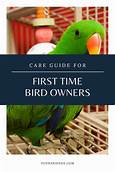How to Start a Pet Shop
Are you passionate about animals and want to turn your love for pets into a business? If so, starting a pet shop can be a rewarding and profitable venture. Here's a step-by-step guide to help you get started:

1. Market Research and Planning
1.1 Assess the Demand:
• Research the local pet market to understand the demand for pet products and services.
• Determine the types of pets (dogs, cats, birds, etc.) that are popular in your area.
1.2 Identify Your Target Audience:
• Define your ideal customer base. Who are the pet owners in your area?
• Identify their needs and preferences regarding pet care.
2. Select a Business Structure and Location
2.1 Choose a Business Structure:
• Decide on the legal structure for your pet shop (e.g., sole proprietorship, partnership, corporation, etc.).
• Understand the legal and tax implications of each structure.
2.2 Find a Suitable Location:
• Look for a commercial space that is well-located and accessible to your target audience.
• Ensure the space is large enough to accommodate your inventory and has proper ventilation.
3. License and Permits
3.1 Obtain Necessary Licenses and Permits:
• Research the local, state, and federal regulations related to pet shops.
• Obtain the necessary licenses and permits for operating a pet shop.
3.2 Veterinary Supervision:
• Depending on your location, you may need to partner with a licensed veterinarian to provide medical care for the animals in your shop.
4. Inventory and Suppliers
4.1 Select High-Quality Suppliers:
• Choose reliable suppliers for pet food, supplies, and accessories.
• Ensure they provide quality products at competitive prices.
4.2 Create a Diverse Inventory:
• Stock a variety of pet products, including food, treats, toys, grooming supplies, and medications.
• Consider offering specialized items for specific pets, such as reptiles or fish.
5. Employees and Training
5.1 Hire Qualified Staff:
• Look for passionate and knowledgeable individuals who are experienced in pet care.
• Provide comprehensive training on animal handling, customer service, and product knowledge.
5.2 Establish a Positive Work Environment:
• Foster a positive and supportive work culture where employees feel valued and motivated.
• Offer competitive salaries, benefits, and opportunities for professional development.
6. Marketing and Promotion
6.1 Develop a Marketing Strategy:
• Create a strong brand identity that represents your pet shop and its values.
• Develop a marketing plan that includes online advertising, social media engagement, and community involvement.
6.2 Offer Exceptional Customer Service:
• Provide personalized service and expert advice to customers, helping them make informed decisions about their pets' needs.
• Offer loyalty programs and promotions to encourage repeat business.
Declaration: All article resources on this website, unless otherwise specified or labeled, are collected from online resources. If the content on this website infringes on the legitimate rights and interests of the original author, you can contact this website to delete it.





